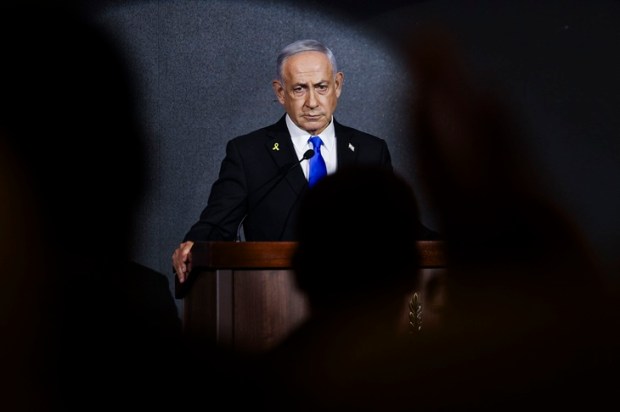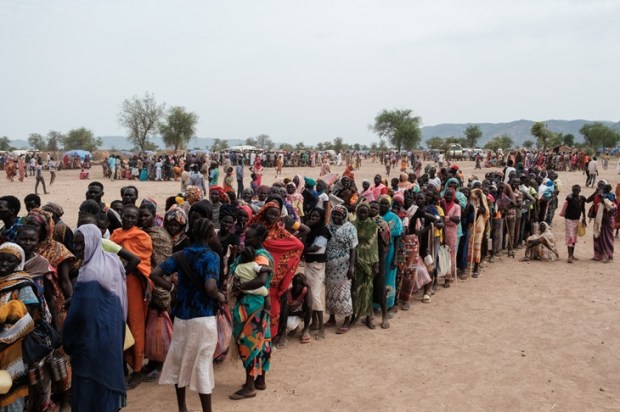While there have been several wars between Israel and its enemies over the years, the latest Hamas attack on Israel is of a different nature given the massacring and kidnapping of Israeli civilians who could not defend themselves.
The number of Israelis killed has risen to over 1,000, wounded to 2,500+ and an estimated 150 Israelis and citizens of other countries have been abducted.
For perspective, on October 7 Israel lost more people in one day than in the entire Six-Day War of 1967.
Arguably, the invasion of Israel from 22 different locations makes for the worst day in Israeli history, akin to a combined Pearl Harbour and 9-11 on American terms.
This calamity will inevitably influence the measures that Israel will pursue to ensure its future security. There will also be political repercussions with Israeli voters demanding answers about how this tragedy was allowed to take place and the much-criticised response time of security forces.
The attack by Iran-sponsored Hamas takes place as the US is working to normalise relations between Saudi Arabia and Israel. It is a brazen attempt by Tehran to derail efforts to assemble an Israel-Saudi Arabia-US coalition to counter Iran. While the deal is on hold for now, many believe that it is likely to move forward in the future due to the shared interests of the three countries.
The aggressor of this war – Hamas – an acronym for Harakat al-Muqawama al-Islamiya (Islamic Resistance Movement), has its roots in the Palestinian branch of the Muslim Brotherhood. It has been in control of Gaza since 2007 and is known to receive funding, training, and weapons from Iran.
Hamas has been open about Tehran’s role in the October 7 attack, sharing with international media outlets that Iran gave it support and backing for its rampage in Israel. Iran’s supreme leader Ayatollah Ali Khamenei later praised the attacks on social media.
It is not known at this point if Palestinians in the West Bank, East Jerusalem, and elsewhere will comply with Hamas’ calls for others to join the fighting and ‘sweep away the occupation’.
Another unknown is whether the war will open on other fronts, such as with Iranian proxies in Syria or with Iran-backed militant group Hezbollah to Israel’s north in Lebanon. A major concern is that Hezbollah may try to use its 150,000 rockets to overwhelm Israel’s Arrow 3, David’s Sling, and Iron Dome air defence systems.
Israeli Prime Minister Benjamin Netanyahu is under pressure to mount a ground invasion into Gaza to destroy Hamas, and families of the hostages are urging action for their rescue. Thus far, his government has mounted a ferocious air campaign targeting Hamas leadership, called up 300,000+ reservists, amassed armaments and forces on the outskirts of Gaza and has cut off electricity and deliveries of food, water, medicine and fuel to the territory.
Many expect that Israel will go to great lengths to eliminate those responsible for the Hamas attacks and that the public will be willing to endure more severe sacrifices this time around than in past wars with Hamas. Israel’s considerable political divisions of the past several months over judicial reform have been put on pause for purposes of forging wartime unity.
Unquestionably, Hamas has spent considerable time and resources preparing for Israeli forces to enter Gaza. According to Israeli Defence Forces veterans, the urban territory is laden with secret tunnels and explosive traps, amounting to a deadly booby-trapped fortress.
A complicating factor for an incursion into the densely packed Mediterranean coastal strip of 2 million people are the Israeli hostages and captives of other nationalities who are being held by Hamas as human shields to deter an Israeli ground attack.
A brief look at history indicates that Hamas will try to strike a lopsided prisoner exchange deal in which all 4,500+ Palestinian prisoners currently held by Israel are freed for the 150 hostages. Prior deals have involved the release of large numbers of prisoners in exchange for individual captives and sometimes the remains of Israeli military personnel.
According to Palestinian authorities, at least 830 people have been killed in the airstrikes against Gaza thus far, and it is expected that civilian casualties will increase once Israel’s ground operations begin.
Worsening matters, Hamas’ practice of placing its rocket teams and command and control units beside civilians (and, in the case of this war, hostages) and inside hospitals, mosques, schools, and apartment buildings will be the largest contributing factor to the high casualty numbers.
Despite the risks and costs, Israel’s political leaders have given the order to its forces to destroy Hamas’ military capabilities and ability to govern the Gaza territory in addition to rescuing the hostages.
This will involve eliminating the leaders and fighters of Hamas and Palestine Islamic Jihad. It will also require the destruction of both organisations’ equipment, rocket manufacturing facilities, weapons, tunnels and other war infrastructure.
Due to the nature of urban warfare, the campaign will likely consist of the casualty-intensive approach of operating block by block, building by building, and room by room.
Although Israel has fought wars in 2008, 2012, 2014, and 2021 to contain Hamas’ rocket firings into Israel, the nature of this latest war is different. Hamas stepped over a red line with its October 7 armed intrusions into Israeli territory and the murdering of civilians, something not seen for decades (some say since the Arab-Israeli War of 1948). In his statements of recent days, Prime Minister Netanyahu has been communicating that Hamas’ unprecedented attack requires an unprecedented Israeli response, and the Israeli public is behind him.
If the past is prologue, as the violence escalates President Biden is likely to face pressure from some in the Democrat Party, the European Union, and the chattering classes to urge restraint by Israel or even a cessation of the hostilities.
As the war encounters delays, setbacks, and loss of life, it will be important for President Biden to stand by Israel and provide it with what it needs to destroy Hamas as both a terrorist organisation and governing entity. The US cannot settle for its ally and sister democracy to live alongside a neighbour of Hamas’ barbarity whose ways do not represent the majority of the Palestinian people.
Specifically, the US will need to replenish Israel’s Iron Dome air defence system which is designed to shoot down incoming rockets and missiles. At present the US Department of Defence is delivering Iron Dome ammunition and interceptors to Israel and will need to continue to do so as the war unfolds.
Additionally, look for the US to send a second aircraft carrier strike group to the waters near Israel as an additional show of force and a warning to Iran not to interfere further in this conflict. This after US Defense Secretary Lloyd Austin on October 8 ordered to the eastern Mediterranean the USS Gerald Ford aircraft carrier, missile cruisers and destroyers along with moving fighter aircraft to bases in the Middle East.
In the coming days and throughout this new war, the US will be expected to assist Israel with resupplying munitions stockpiles, mission planning and intelligence support, among other areas.
The US will also focus on building a coalition of support for Israel and to work with regional partners such as Saudi Arabia, the United Arab Emirates, Bahrain, Qatar, and Jordan to prevent the war from expanding.
Efforts are underway by the Biden administration and the US Senate on a bill to secure an aid package for Israel, up to $60 billion for Ukraine and money to purchase armaments for Taiwan. This is taking place at a time when the House Speaker position has been vacated due to Republican Party infighting, a reality that some constitutional scholars think throws a wrench into the Congressional appropriations process.
Complicating matters, less than half of the House Republican Caucus support further aid to Ukraine, imperilling the Biden administration’s efforts to tie assistance for Israel to funding for Kyiv. Additionally, there is a fast-approaching November 17 government shutdown deadline and the US still does not have a Senate-confirmed Ambassador to Israel.
A political reality facing Congressional Republicans will be the challenge of explaining why they will vote to support Israel while more than half of their Members promise to oppose additional assistance to Ukraine. This debate and wrangling may lead to delays in appropriating aid.
For Biden’s part, some analysts argue that Biden’s steadfast support of Israel is necessary to show he is being tough on Iran as he mounts his 2024 re-election campaign. The President has also been forced to clean up the political fallout from his administration’s controversial decision to lift its freeze of $6 billion in Iranian funds in exchange for the release of five US citizens being held by Tehran.
The current struggle for Israel’s security will call for patience and compromise by Israeli and American political leaders and their voters. It will also require shows of strength to the region and to the world given that both countries’ adversaries are watching closely.
Neither Netanyahu nor Biden can afford to come up short.
Ted Gover, Ph.D. (@tedgover) is Associate Clinical Faculty at Claremont Graduate University in Los Angeles.

























